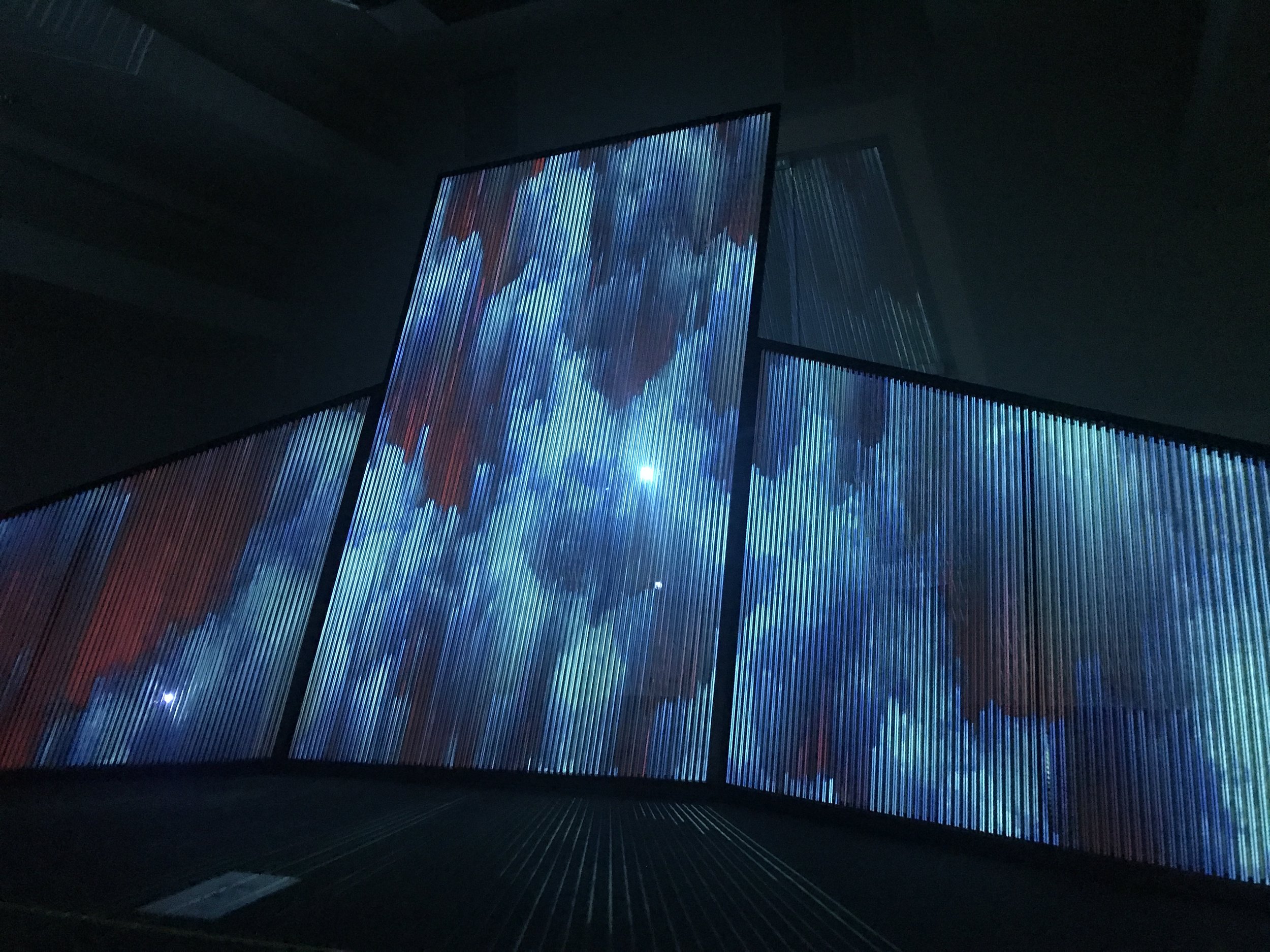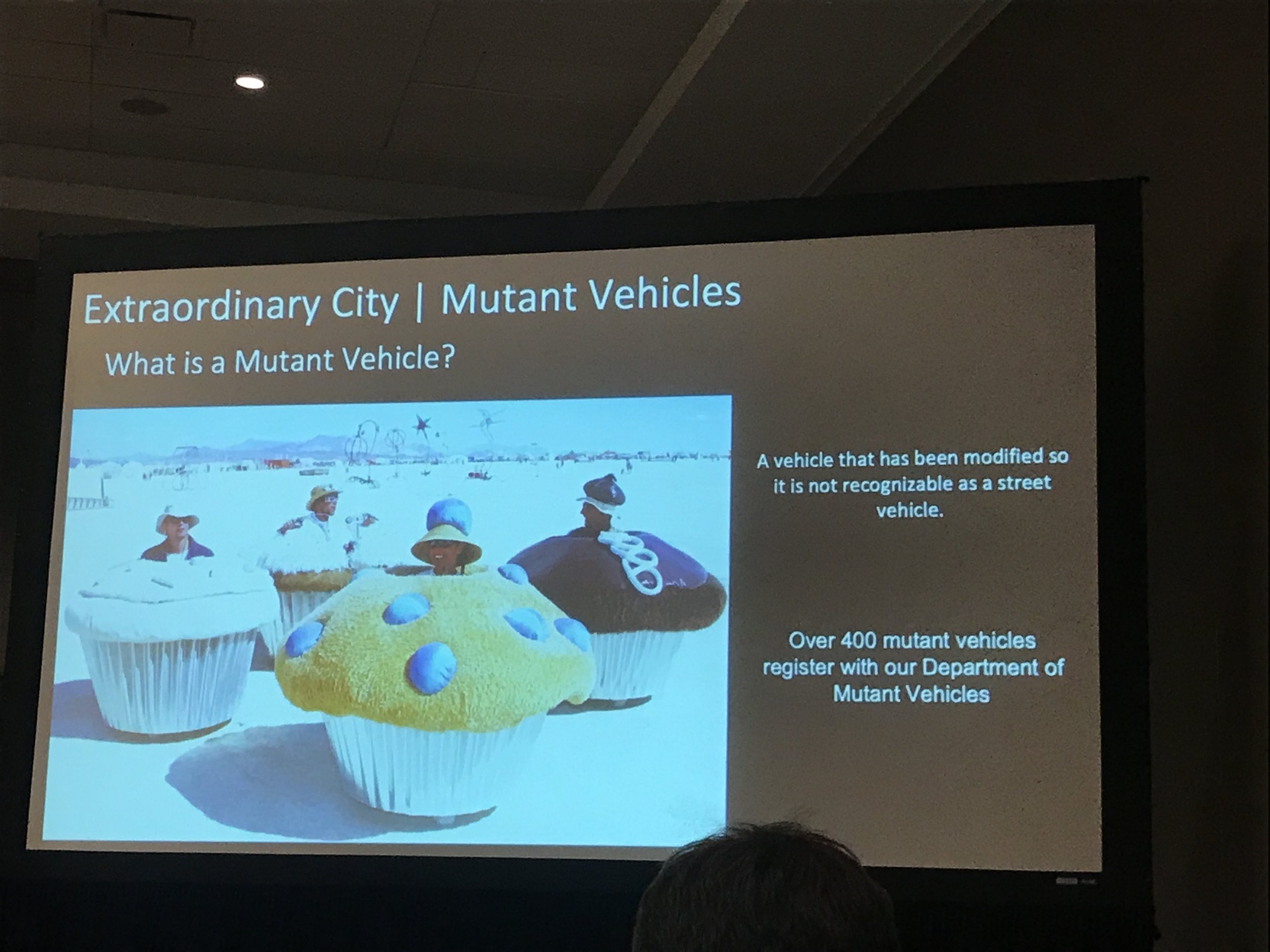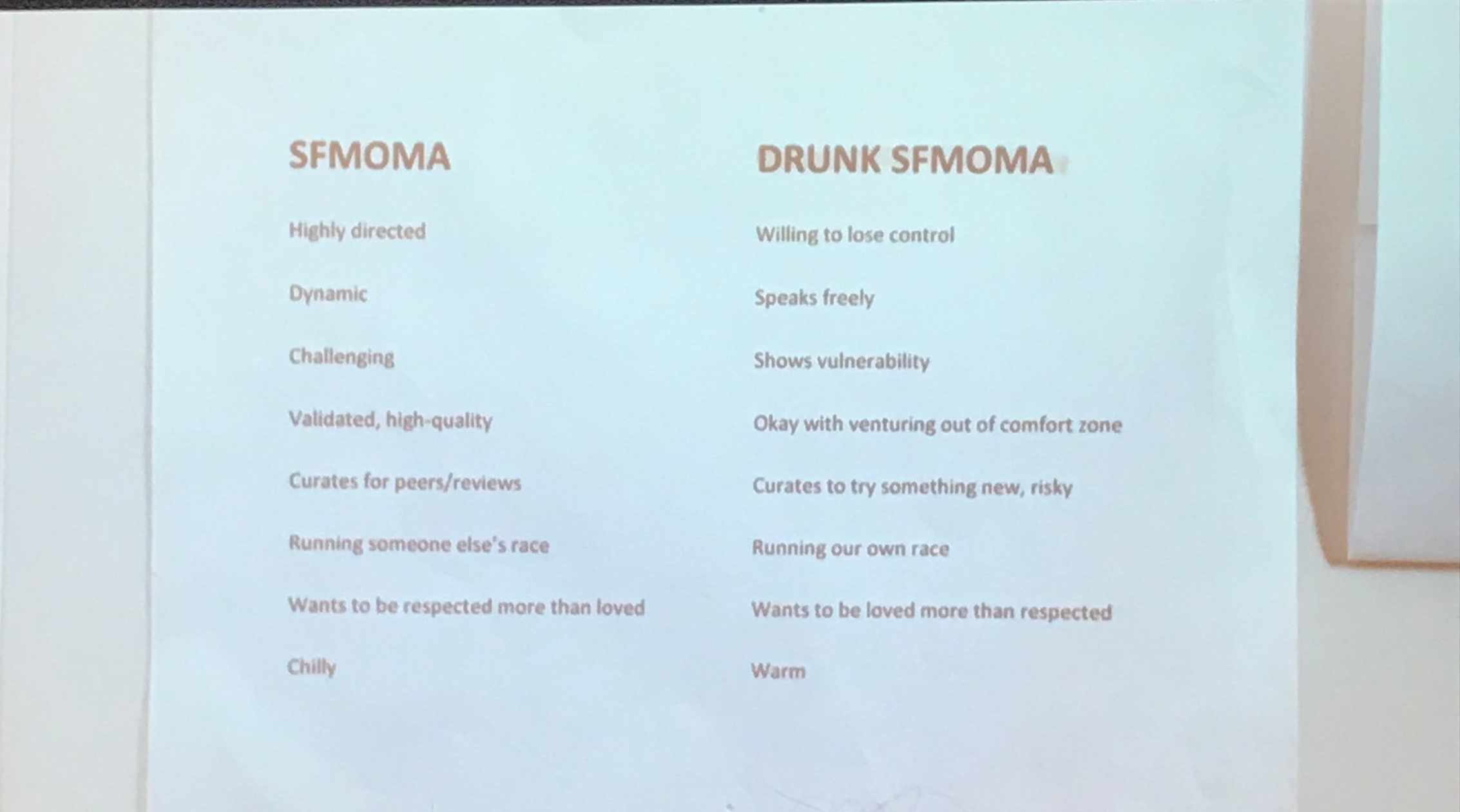So you might be wondering, “what happened to Day 4????” Well anyone who has been to SXSW will tell you that pacing yourself is key to surviving the week. So on Day 4, while I got up early to check out the trade show (which was crazy - there was 3D printed sushi, sloth robots, and real sloths), I couldn’t make it to afternoon sessions due to pure exhaustion. But that’s okay, because then I was very well rested for Day 5!
In the morning, I started early with a panel hosted by Kim Cook, the Director of Civic Engagement and Art at Burning Man Project. Prior to this panel, I had absolutely no interest in ever attending Burning Man. Funnily enough, a friend had just asked me the day before if I would be interested in going to Burning Man with her, and was met with a resounding no from me. I deeply dislike being dirty. However, after this panel, I’ve become determined to one day have my own installation at Burning Man complete with a built-in shower.
The panel, named “High Impact in Public Space: Art, Spectacle, Tech” featured Noeline Kavanagh from Macnas and Ed Purver from Cocolab. I had only recently become familiar with Cocolab, when I heard a strange noise emanating from a random room in the Austin Convention Center. When I walked in there was an incredibly mesmerizing installation piece called “Weaving,” a beautiful light and sound installation inspired by loom textiles produced by Mexican artists.
Cocolab is a multidisciplinary design studio based in Mexico City that focuses on activations of public spaces. In Purver’s work, he is curious about:
Changing our relationship to place
Questioning our assumptions
Changing our role in context
Changing the rules of engagement
In his early work, he explored these topics through performance art. As young artist, he engaged in a passion project with his friend. They would board the London Tube separately during rush hour, and then he would ask his friend (who pretended to be a stranger) if he could sit on his lap. His friend would then reluctantly agree, and then after several stops, Purver would get up thank him and then leave. Their goal was the disrupt the rules of engagement. If people could witness acts of generosity they wouldn’t expect, would people become more generous?
Purver also worked on projects to open the windows of possibility to redefine the environment in which we live. He stated that most of us don’t think about the context of our environment, but when we become more present, we become alive, and from there we can be happy.
Kavanagh shared her work with Macnas. She stated that imagination is a revolutionary act and a universal sensibility. Her work is dedicated to making the invisible into visible, making the unfathomable into fathomable, and making thoughts into words. Macnas is a spectacle theater in Galway, think Cirque du Soleil but in parades with Giants. They create giant moving installation of fantastical creatures, exploring strange themes, like a hermetic Giant that has a bluetooth beacon in its beard that can transmit its inner thoughts.
When it came to Cook, she questioned how Burning Man can be used to disrupt the norm and how cultural knowledge can be transmitted. She asked: What is the invitation that we want to give to people? What’s the connection? She stated that context is everything, that Burning Man is an act of joy and imagination.
These creators all seek to create moments of imagination in public spaces. I can’t help to think how incredible it is that everyday they nourish their inner child with the work that they do. How can I sustain and foster my own inner child with my work?
In the afternoon, I joined a talk with Suhair Khan from Google Arts and Culture. She discussed Google’s initiatives to use the power of technology to preserve culture. Working with major institutions, Google has been digitally scanning artwork and providing public domain access to high res versions. They’ve also embarked on the digital preservation of cultural landmarks with #OpenHeritage with CyArk, open source 3D renderings of cultural treasured. In addition, they’ve started Once Upon a Try, a journey of invention and discovery, using VR/AR/videos to highlight discoveries. Campaigns like #ArtSelfie and #ArtPalette, use machine learning in combination with these new archives to help guests find their famous portrait lookalike and artists to find color palettes that have been used through the centuries. All of this derived from a 20% project inspired by how Google’s technology can be used to preserve culture. I had absolutely no idea that these resources were available online for free. What a beautiful use of technology to enhance cultural preservation.
Ending my trip on a high note, my last session that I attended was titled, “Art Museums as Space of Digital Play.” Speakers Sarah Brin from Meow Wolf, Chad Coerver from SFMOMA, and Charles Yust from frog design discussed how play can be used to open up new experiences.
Coerver opened up discussing SFMOMA’s new initiatives to change the way that they bring in new audiences. We all know that emotions and creating moments can help people learn. So how can the museum tap into that?
Coerver discussed creating an emotional pathway for guests from curiosity to welcome to delight to belonging. The institution challenged itself to think like it was drunk (and to actually get drunk to think). They asked how play could change their relationship with the audience?
They worked with Adobe to create a self-composing piece of artwork that exposes your face in a selfie the more you added to the installation. They created Send Me SFMOMA, an SMS service that texts you a picture of a related artwork image depending on what you ask for via text. And they started PlaySFMOMA, an initiative to encourage the development of games as an art medium. With Yust at frog design, they created an AR/MR Magritte exhibit that allows guests to connect with Magritte’s artwork in a playful way.
Ultimately, their hope to create a place in which guests leave saying “This is a place for me.”
In spite of all of these well-thought out planned projects, by far my favorite project discussed was one that was not even commissioned. MoMAR was a group of eight internet artists that hijacked the Jackson Pollock room at the NYC MoMA with their own guerilla-style campaign. They released an app that added their own interpretation of the artwork as an overlay to the pieces. Their goal was to make a statement against elitism in art.
What I loved about this work, was that it took advantage of what already existed in the space, and added more meaning. It allowed guests to “play” with the artwork, and explore through another artist’s eyes. So not only were you able to enjoy a Pollock (which quite frankly I still don’t get the hype), you were also able to enjoy another artist’s artwork (which I deeply appreciated their humor). I also loved that they didn’t ask permission to do it! Why should we ever have to ask permission to bring more play, joy, or laughter into this world?
All in all, my trip to SXSW was a fantastic learning experience and I returned feeling inspired to keep doing my work. Sometimes it can be a drag to get through grad school; it’s easy to forget the big picture amongst the slog of everyday. But I guess all it takes is attending 10 amazing sessions by professionals in your field to remember why you’re doing what you’re doing: to bring more play, imagination, and spectacle into the world.
While I’ve been able to share all that I’ve learned from my sessions. I haven’t even begin to cover the amazing people that I’ve met at the conference, or share the incredible work that they’re doing. I hope that you’ve enjoyed reading about what I’ve learned, and I hope that I have the opportunity to return back to this conference next year!
Until then, wish me luck through the rest of this semester! Hopefully I have enough inspiration in the tank to help me make it through...


